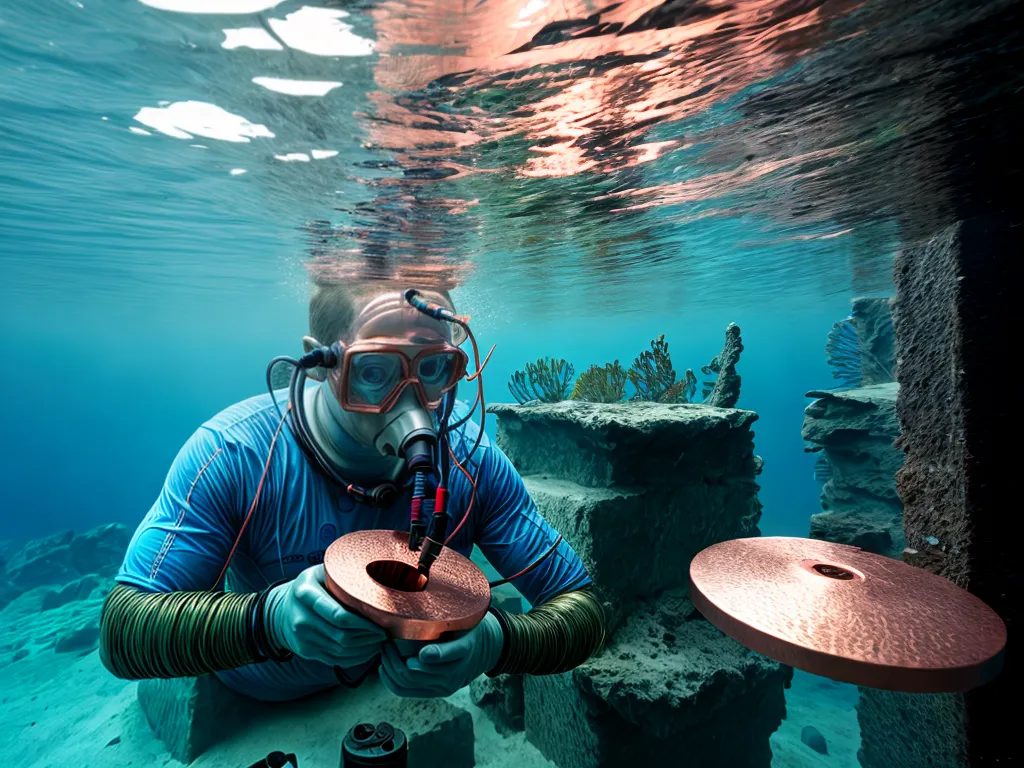
Copper wiring can be an excellent choice for many underwater electrical projects due to its high conductivity and corrosion resistance. However, special considerations must be taken when using copper underwater. In this comprehensive guide, I will cover everything you need to know about utilizing copper wiring for your underwater electronic endeavors.
Choosing the Right Copper Wire Gauge and Insulation
When selecting copper wire for underwater use, gauge and insulation are two critical factors.
Wire Gauge
The gauge of the copper wire determines its current carrying capacity. For most underwater projects, I recommend 16 AWG to 10 AWG as ideal sizes.
- 16 AWG copper wire can carry up to 13 amps and is good for lower power circuits.
- Moving up to 14 AWG increases the capacity to 19 amps.
- 12 AWG can handle up to 25 amps and is a common choice for many underwater applications.
- For high power needs, 10 AWG can carry up to 40 amps.
Larger wire gauges like 8 AWG and 6 AWG can be used for very high current demands. However, they may be unnecessarily large and cumbersome for typical underwater uses.
Insulation Material
The insulation on the copper wire must be waterproof and resistant to saltwater corrosion. Common options include:
- Cross-linked polyethylene (XLPE) - Excellent chemical resistance and waterproofing. My top choice for underwater.
- Thermoplastic polyethylene (THHN) - Budget friendly option with good water resistance.
- Polyvinyl chloride (PVC) - Decent corrosion protection but less flexible than other options.
Avoid rubber or silicone insulated wires as they degrade over time underwater.
Making Waterproof Wire Connections
Protecting connections from water ingress is crucial for reliability. Here are some methods I recommend:
Potting Compound
Potting compounds like epoxy resin or polyurethane can be poured over connections to seal out water. This completely encapsulates the wires in a solid block.
Pros:
- Extremely effective waterproofing.
- Insulates connections from corrosion.
Cons:
- Permanent - no modifying connections after potting.
- Thermal insulation can cause overheating.
Heat Shrink Tubing
Sliding heat shrink tubing over connections and heating it provides a tight seal. Use adhesive-lined tubing for maximum water protection.
Pros:
- Quick and reversible connections.
- Tubing flexes rather than cracking over time.
Cons:
- Not as robust sealing as potting compounds.
- Needs a heat source like a heat gun.
Waterproof Wire Nuts
Special waterproof wire nuts can seal out water at connections while maintaining easy assembly. Apply dielectric grease for added corrosion protection.
Pros:
- Simple assembly and modular connections.
- Low cost.
Cons:
- Less reliable sealing than other methods.
- Corrosion risk over long term.
Preventing Galvanic Corrosion
When dissimilar metals are used together underwater, galvanic corrosion can occur. This accelerates deterioration and damage.
To prevent galvanic corrosion with copper:
- Use plastic, nylon, or stainless steel fasteners - avoid steel, aluminum.
- If connecting to aluminum wiring, isolate connections with dielectric grease.
- Use sealant or potting compound when transitioning between metals.
Additionally, design for easy potential equalization between metal components to inhibit galvanic action.
Choosing a Depth Rating
Consider maximum depth needs when selecting underwater electrical components.
- For shallow water up to 3 meters, standard PVC insulated copper wiring is often adequate.
- For depths between 3 to 30 meters, upgrade to polyethylene or cross-linked polyethylene (XLPE) insulation.
- For deep submersion below 30 meters, choose wiring with thick XLPE insulation and water pressure resistant connections.
Reinforce connections with potting compound or specialized pressure-equalizing terminal blocks. Avoid soft solder joints.
Testing assemblies at incrementally higher pressures is wise to verify waterproofing. Consider safety factors of 2x or 3x design depth.
Example Underwater Copper Wiring Applications
Here are a few project examples where copper wire can be utilized effectively:
Underwater ROV Thrusters
Remotely operated underwater vehicles use copper wiring to connect power and control signals to electric thrusters for propulsion. 14 AWG XLPE copper cable with waterproof connectors works well in these applications.
Submerged LED Lighting
Decorative LED lighting installations in ponds, pools, and fountains use copper wiring to supply power underwater. 12 AWG PVC insulation provides adequate protection for shallow depths up to 1-2 meters.
Underwater Sensor Array
Research projects with networks of submerged data collection nodes can use 16 AWG XLPE copper wiring between sensor modules and central hubs. Seal connections thoroughly for reliability.
Electric Trolling Motor
Electric trolling motor cables employ tough 10 AWG THHN copper wiring to provide high current over 3-5 meters depth. Use proper waterproofing techniques at swivel connections.
Key Takeaways
- Choose proper copper wire gauge and insulation type for the environment.
- Waterproof all connections thoroughly - potting compound, heat shrink, or waterproof wire nuts.
- Prevent galvanic corrosion between dissimilar metals.
- Select components rated for the working depth. Deeper applications require more robust wiring.
- Test assemblies for leaks at incremental pressures.
With thoughtful design practices, copper can be an excellent wiring choice for underwater projects. Let me know if you have any other questions!